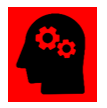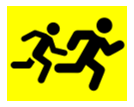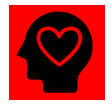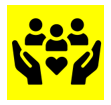Curriculum
Our Vision
As a member of Exceed Learning Partnership our vision is to equip young people with the knowledge, skills and mind-set to thrive and then take on the world!
Our Values
INSPIRE - All members of our organisation aim for excellence in their individual professional roles, in our innovative, evidenced-based practice and in our pupils so that we can all fulfil our potential in whatever we aspire to do or be!
INCLUDE - We are concerned with achieving equitable, diverse and quality education for all pupils. Social justice includes a vision of society in which the distribution of resources is equitable and all members are physically and psychologically safe and secure.
INTEGRITY - We always act with integrity. By allowing high levels of autonomy wherever possible, we are able to nurture personalised learning approaches and focus on developing holistic people.
EXCEED - Excellence and enjoyment should be an entitlement for all children and adults working in our Trust. We are developing cutting-edge, research-informed and highly engaging pedagogies that ensure high levels of progress and rapid development of staff; leading to the highest levels of achievement for all!
How this looks at Sandringham
At Sandringham Primary School you will see this vision and these values enacted in everything we do. We are ambitious. We are reaching for stars! This means we aim for excellence so that we can say with confidence that we give EVERY CHILD EVERY CHANCE EVERY DAY.

![]()
A vision for excellence in our curriculum

STRETCHING THE MIND
All children develop deep knowledge, skills and understanding. They love reading and all do so fluently, widely and often from high-quality literature. They use language and vocabulary confidently in any situation and have the maths skills for subsequent learning and real life.

STRENGTHENING THE BODY
All children are active, healthy and take responsibility for their own health.

ENCOURAGING THE WILL TO DO GOOD
All children develop responsibility for those around them and for their world. They are ready for life in modern Britain and to become global citizens.

ENRICHING THE IMAGINATION
All children develop creativity. They express this through their exploration of literature, their appreciation of the arts, exposure to cultural experiences, and through a wide range of quality extra-curricular enrichment activities.

NOURISHING THE SPIRIT
All children develop strong emotional intelligence, so that they are confident, happy learners who are resilient to the challenges of learning and life.

OPENING THE HEART TO OTHERS
All children understand, accept and celebrate the similarity and diversity of those who are in their school, local community and the world.
![]()
How we will deliver

Plan
In our drive to achieve excellence we plan our curriculum intent and implementation carefully so that it is sequenced, cumulative, coherent and connected. We take into account our context and the characteristics of our children and families.
Show
We show children examples of excellence. We do this to inspire them and show them the level expected of them. We unpick these models with them, so that they are clear about what makes them excellent. Adults show learning by providing worked examples and sharing teacher books.
Feedback
Feedback is effective and provided at the ‘attempt’ phase, so that learning moves forward at pace. Children are asked to integrate their learning by summarising, questioning and retrieving through cumulative quizzing.
Require
We require children to select, organise and integrate their learning, so that they are activating their long-term memories and applying what they know. We require this approach in teachers’ planning and delivery of all subjects. Prior knowledge, expected presentation and implementation of feedback are non-negotiable. We require that teachers uphold these expectations and do not settle for less than a pupil’s best.
Celebrate
At all times we consider whether learning exudes excellence. We celebrate the accomplishments of pupils by sharing their excellence, through praise, assemblies, displays and events. We celebrate the excellence secured by great teaching.
Enrichment
We have built in examples of excellence into our curriculum, including educational visits, visitors and carefully mapped our the teaching of British Values and Cultural Capital.
Curriculum Policy
Further information is available in our Curriculum Policy within the policies section of our website.